Courting in the Wild
Throughout the animal kingdom, prospective mates will put on elaborate shows to woo a partner with only a chance of success. They showcase their abilities and appearances in hopes of entrancing a mate, either for a long term partner or a means to an offspring. This article explores the wide variety of courtship strategies, from dances to the most outlandish methods.
Enchanting Dances

The mudskipper, known for their huge adorable eyes and tremendous agility, is found in the Indo-Pacific, ranging from south-eastern Africa, south Asia, and Australia. These long, thin fish can grow up to one foot long and survive on land for long periods of time. When courting, the male mudskippers demonstrate their agility by flaring their colorful fins and hopping straight up into the air. If the female mudskipper is impressed by the display, she will follow the male into his nearby burrow so that they can reproduce. Watch the dancing display here!
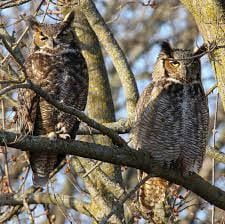
Great horned owls mate for life, and this long union begins in the early fall when the males will perch up in high trees, calling out to any prospective mate. After a period of four to six weeks, female great horned owls will begin responding back, their class lasting for about two weeks. Once two great horned owls find each other they will perform courtship dance, bobbing and twisting their heads together. At the end of this dance, they will both let out a four to six second screech to finalize their union. Throughout their lives together, the two owls will periodically sing and dance together through the night, signifying their territory to all others that may hear.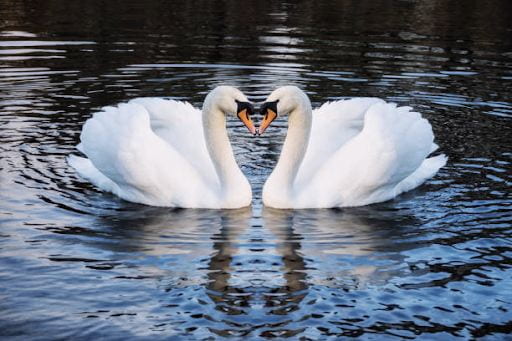
Swans also mate for life, and their mating displays are long and elaborate to match their commitment. Two birds interested in each other will open their feathers, prune each other, dip their necks into the water, and mirror each other’s dance moves while keeping eye contact. At the end of the dance, they will embrace each other by wrapping their necks around each other. After this embrace, the two swans will begin their long journey together. From this point on, the two will go about their daily habits of feeding themselves and nesting, but they will always stay in close proximity to each other.
Wild Artisans
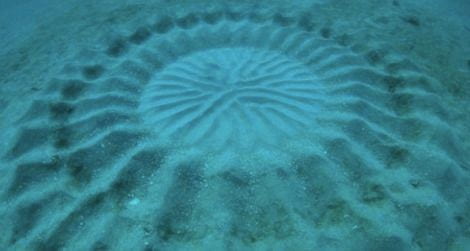
Many species of puffer fish, including the Japanese Puffer fish and the white spotted puffer, will make intricate designs in the sand in order to entice a mate. These fish, growing to an average of only 12 cm long, will make circular designs up to 2 meters in diameter. The female puffers will examine the circles, searching for one that is up to her unknown standards to lay her eggs in. Once she has found one, she will lay her eggs in the center of the sand design. The male artist will then fertilize the eggs, staying to guard the eggs for up to a week afterwards.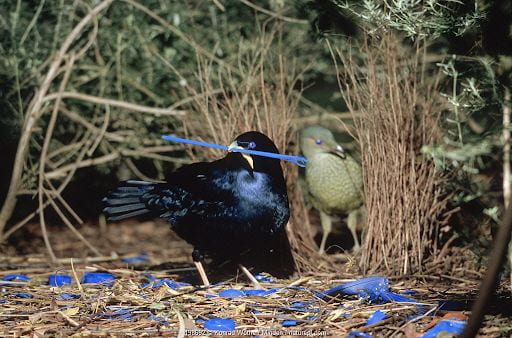
Bower birds impress their mates with their artistic and creative ability, building elaborate structures of twigs, man-made objects, stones, and bones. The structure, or bower, resembles a court, and a male bowerbird will wait by his bower for any prospective mate to inspect. When a female bowerbird expresses interest, he will show her around his bower, pointing out anything particularly shiny. She will then perch in the middle of the bower, surrounded by the nest of twigs, and he will put on an elaborate dance for her, meant to display his abilities and colorful feathers.
The Down and Dirty
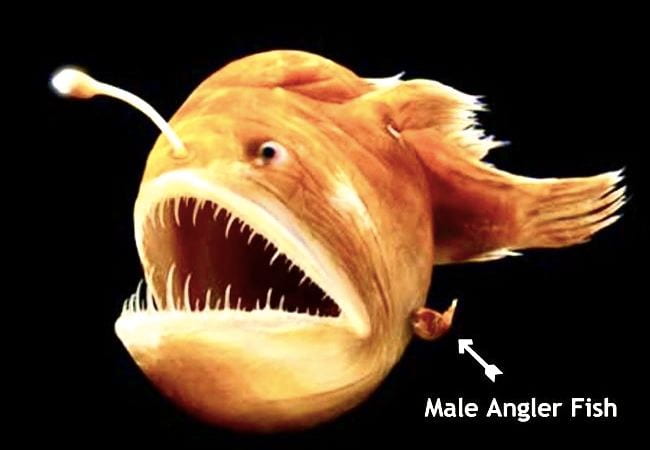 Deep in the sea, the angler fish mating is a testament to life-long, and life-ending, commitment. Female angler fish are large, with long tentacles reaching out from her body to sense any prey that may be swimming nearby. Males, on the other hand, are tiny fish with a strong sense of smell, which they use to sniff out their mates. Once the males have located a female angler fish, they will bite on to her in order to latch on. Once attached, the males will remain latched as the two bodies slowly fuse together, their tissues joining into one seamless body. From there, the female angler fish will continue to hunt and swim on her merry way, waiting to use the male reproductive organs that are now attached to her until she is ready to reproduce.
Deep in the sea, the angler fish mating is a testament to life-long, and life-ending, commitment. Female angler fish are large, with long tentacles reaching out from her body to sense any prey that may be swimming nearby. Males, on the other hand, are tiny fish with a strong sense of smell, which they use to sniff out their mates. Once the males have located a female angler fish, they will bite on to her in order to latch on. Once attached, the males will remain latched as the two bodies slowly fuse together, their tissues joining into one seamless body. From there, the female angler fish will continue to hunt and swim on her merry way, waiting to use the male reproductive organs that are now attached to her until she is ready to reproduce.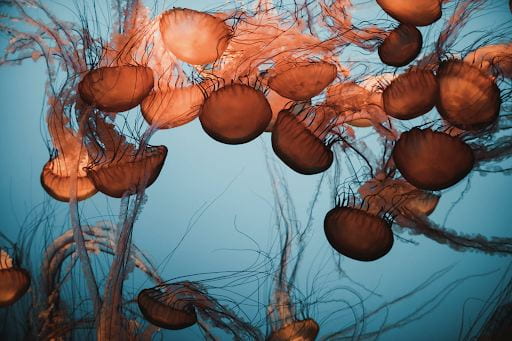
Medusa jellyfish mate far less personally. They travel the oceans in swarms, and when it is their mating season the males of the swarm will release sperm into the water, creating a jellyfish bloom. The females will then swim through the bloom, absorbing the sperm into their bodies as they travel through it. Their eggs are then internally fertilized, completing the mating process.
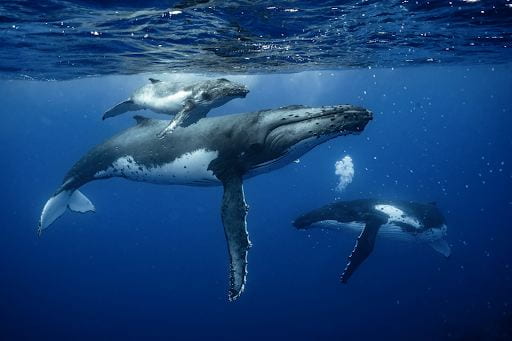
Male humpback whales abandon their “quiet giants” stereotype when it is time for mating. They will sing a mating song, calling out to any female they may find. If the female can breed, the male will try to mate with her, regardless of whether or not she already has a calf. In some cases, pregnant humpbacks or ones who have just given birth will be accompanied by unrelated male escorts, who protect the female from other suitors. This role is not entirely selfless, as they wait until the female is able to breed again and then leave after she is pregnant with their own offspring. Unguarded humpback mothers and their calves have to defend themselves from aggressive males, as they will try to separate the two in order to mate and create an offspring of their own. Despite their tremendous size, the whales can have spurts of great speed and agility, leading to dramatic fights for a mate. The mothers desperately try to protect their young by deflecting hits with her own body and lifting their calf’s head above the water, keeping it from getting too deep and potentially drowning.
Bibliography
Castro, J. (2014, May 29). Animal sex: How jellyfish do it. LiveScience. https://www.livescience.com/45975-animal-sex-jellyfish.html
CBC/Radio Canada. (2020, February 13). 20 animal mating rituals from the cute to the cannibalistic | CBC life. CBCnews. https://www.cbc.ca/life/culture/20-animal-mating-rituals-from-the-cute-to-the-cannibalistic-1.5462981
Instructor, F. (n.d.). It’s hooting season! Denver Botanic Gardens. https://www.botanicgardens.org/blog/its-hooting-season#:~:text=Eventually%20a%20 female%20 answers%20the,that%20lasts%204%2D7%20seconds.
Main, D. (2013, October 4). Pufferfish courtship explains mysterious underwater circles. Scientific American. https://www.scientificamerican.com/article/pufferfish-courtship-explain-mysterious-underwater-circles/
Reichel, M. (2023, October 5). The not so tender world of Whale Courtship. Inertia Network. https://www.inertianetwork.com/magazine/the-not-so-tender-world-of-humpback-whale-courtship
Swans mating. Swanlife. (n.d.). https://www.swanlife.com/swans-mating-ritual


